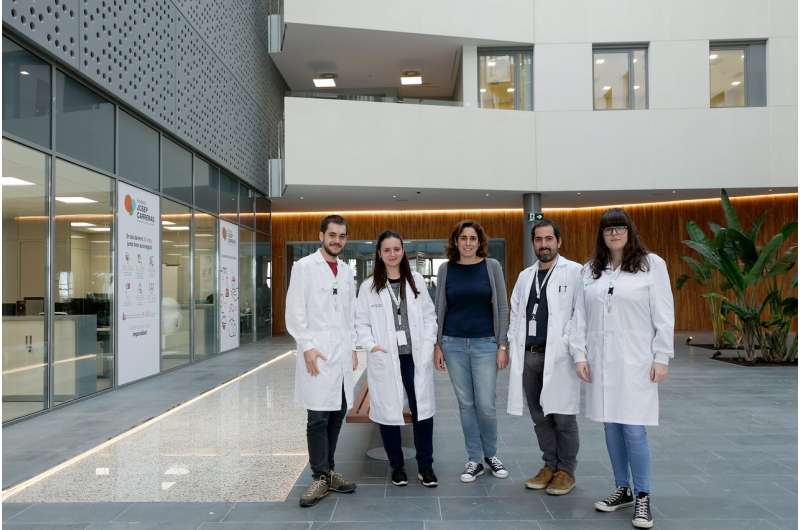Antihistamines that cause the death of leukaemic stem cells

Ruth M. Risueño leads the Leukaemic Stem Cell group of the Josep Carreras Leukaemia Research Institute. This group investigates Acute Myeloid Leukaemia (AML) and the cell population responsible for the disease spreading, persisting, and if it has been treated and overcome, reappearing.
AML is one type of leukaemia with the worst prognosis. Its treatment with chemotherapy varies from 50% to 85%, and has a high rate of recidivism after treatment. Relapse in the disease may be because a small number of diseased stem cells have become resistant to treatment, and it being only a matter of time for these cells to spread again.
Leukaemic stem cells can be renewed or differentiated. They replicate themselves indefinitely to maintain their population. However, when they differentiate, they generate all the types of mature leukaemic cells found in the tumor. These adult cells, which are the majority in leukaemia, have lower prevalence and are more sensitive to chemotherapy. Nevertheless, leukaemic stem cells are responsible for the initiation, maintenance, and regeneration of the disease. But they can be killed, with death induced or differentiation induced into mature cells.
"If we can differentiate all leukaemic stem cells, this population would be depleted. Therefore, its ability to maintain the disease and the chances of regeneration and relapse would be lost," says Risueño to explain in which area his team focuses most of his work.
In the research recently published in EBioMedicine, in which Dr. Josep Mª Cornet-Masana collaborates, after the first phase of search and screening in silico of molecules by computer procedures, a group of antihistamines was found. Tests with antihistamines in laboratory samples and mice resulted not only in differentiation induction.
Through a mechanism that is different from their antiallergic function, antihistamines penetrate two vital "organs" of the cell: Those responsible for metabolizing energy, mitochondria, and those responsible for cell digestion, lysosomes, causing their failure and leading to cell death.
"This does not affect healthy cells because the process of transforming leukaemic cells implies that mitochondria and lysosomes are more fragile. This fact allows them to have more resistance to pre-apoptotic stimuli, that is, to the cell's safety mechanisms that cause their death when something goes wrong, and increase the metabolic rate, which is necessary for all tumor cells. What is an advantage for the propagation of the tumor becomes a disadvantage for its protection against such drugs." Argues Risueño.
At the moment, these drugs cannot be used against leukaemia because of their rapid degradation and because they do not have a direct administration technique on diseased cells. Risueño's team is working to make these drugs more stable while developing a mechanism so that they can be administered directly and distinctively on leukaemic stem cells.
More information: Josep M. Cornet-Masana et al, Dual lysosomal-mitochondrial targeting by antihistamines to eradicate leukaemic cells, EBioMedicine (2019). DOI: 10.1016/j.ebiom.2019.08.021


















